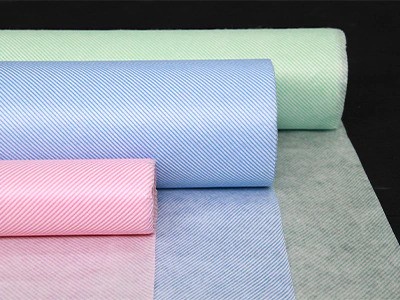Non-woven fabric, as the name suggests, is a type of fabric that is not woven. Instead, it is created through the process of bonding fibers together using heat, chemicals, or mechanical means. This unique manufacturing process gives non-woven fabrics their distinct qualities, such as strength, durability, and breathability. In this section, we will take a closer look at the behind-the-scenes operations of non-woven fabric manufacturing and uncover the intricacies of this fascinating industry.
Raw Material Selection: The Foundation of Non-Woven Fabrics
To begin, the production of non-woven fabrics starts with the selection of raw materials. These can include natural fibers such as cotton, wool, or silk, as well as synthetic fibers like polyester, polypropylene, or nylon. The choice of raw materials depends on the intended application and desired properties of the fabric. Once the raw materials are selected, they undergo a series of processes to transform them into non-woven fabrics.
Step 1: Fiber Preparation
The first step in non woven fabric manufacturer is fiber preparation. In this stage, the raw materials are cleaned, sorted, and sometimes blended to achieve the desired fiber composition. The fibers may also be subjected to treatments such as dyeing or chemical modifications to enhance their performance. This preparation stage ensures that the fibers are ready for the subsequent bonding process.
Step 2: Bonding for Strength and Structure
The next crucial step is the bonding process, where the individual fibers are fused together to form a cohesive fabric structure. There are several methods used for bonding non-woven fabrics, including thermal bonding, chemical bonding, and mechanical bonding. Thermal bonding involves using heat and pressure to melt the fibers together, while chemical bonding utilizes adhesives or solvents to create a bond. Mechanical bonding, on the other hand, involves entangling the fibers using needles or water jets. Each bonding method has its own advantages and is chosen based on the desired properties of the final fabric.
Finishing Touches: Enhancing Characteristics
Once the bonding process is complete, the non-woven fabric goes through a range of finishing treatments to further enhance its characteristics. These treatments can include processes like calendaring, where the fabric is passed through heated rollers to create a smooth surface, or coating, where a layer of material is applied to improve water resistance or flame retardancy. Finishing treatments not only add value to the fabric but also tailor it to specific applications by enhancing its functional properties.
Advanced Machinery and Quality Control
As non-woven fabric manufacturing is a highly specialized industry, it requires advanced machinery and sophisticated production techniques. State-of-the-art machines, such as needle punching machines, spunbond lines, or meltblown lines, are utilized to ensure precise and efficient production. These machines are capable of handling large volumes of fibers and can produce non-woven fabrics of varying thicknesses, weights, and textures.
Quality control is an integral part of non-woven fabric manufacturing. Throughout the production process, strict measures are taken to monitor and maintain the desired fabric properties. Quality tests are conducted at different stages, checking parameters like tensile strength, tear resistance, and dimensional stability. This ensures that the non-woven fabric meets the required industry standards and customer specifications.
In Conclusion: A Complex and Fascinating Process
In conclusion, non-woven fabric manufacturing is a complex and fascinating process that involves selecting the right raw materials, preparing the fibers, bonding them together, and applying finishing treatments. Advanced machinery and rigorous quality control measures play key roles in ensuring the production of high-quality non-woven fabrics. With its versatility and numerous advantages, non-woven fabric has become an integral part of various industries, including healthcare, automotive, construction, and more.


No comments yet